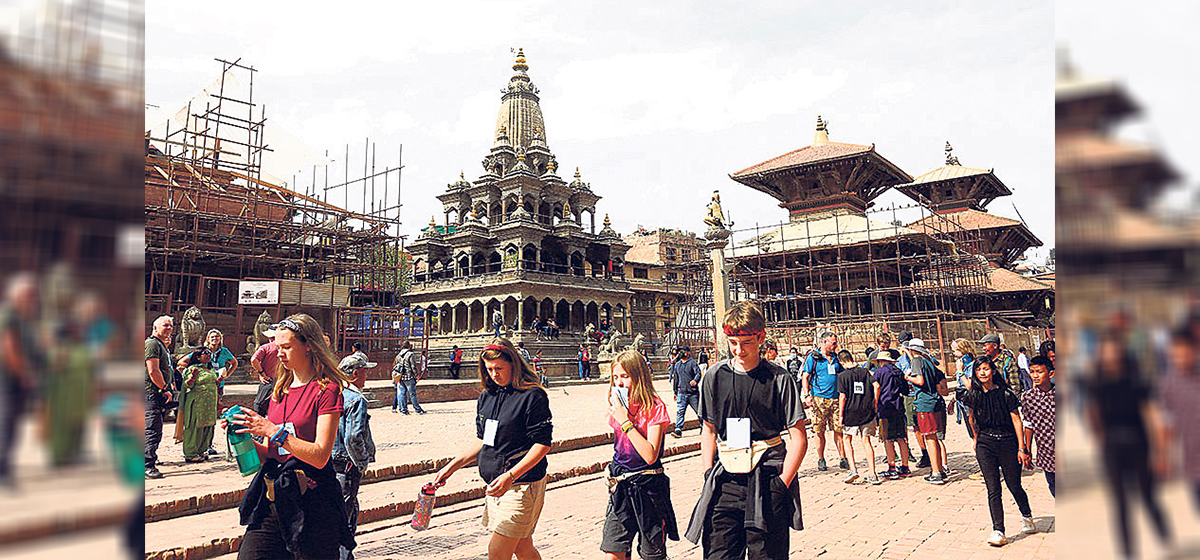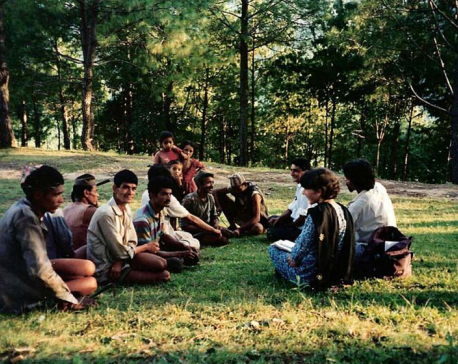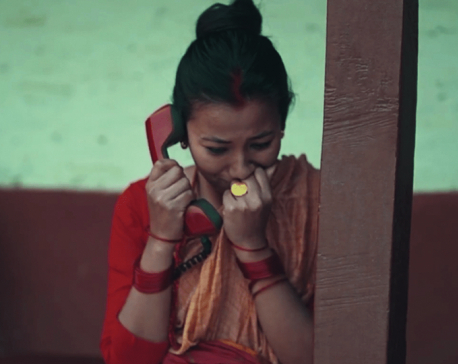
OR
Opinion


Tulsi Paudel
(The author is a faculty member, Business and Management Department, Sanming University, China.)news@myrepublica.com
More from Author
Nepal needs to start thinking about post-COVID tourism strategies as a country with considerable dependence on tourism income.
The word 'COVID-19' has become synonymous with the worst thing that has ever happened to humans. The coronavirus outbreak that started at the end of 2019 deteriorated the whole world in different aspects. The tourism industry is the hardest hit one by COVID 19, and the situation is horrendous. Most tourism industry entrepreneurs and stakeholders are affected by the nastiest pandemic ever faced by the modern world.
Before COVID-19, people were enjoying excessive mobility across the world. According to UNWTO, almost 1.5 billion people were rambling around the different corners of earth in 2019. Millions of jobs were created, trillions of revenue were generated, and faster economic growth was achieved through the relentless tourism industry. Then COVID-19 happened, and international tourism's dark days started; revenue, mobility, and economic growth all plummeted. People were forced to stay home, and the "lockdown era" began. World tourism is back to levels of 40 years ago.
Nepal, a Himalayan nation, has significant dependence on tourism income. This tiny South Asian country enjoys an astonishing natural beauty with over a dozen mountains over 8000 meters. The developing nation with an economy of only around 30 to 40 billion USD has significant support from the tourism industry whose contribution to the national GDP was 10.4 percent in 2019. In addition, according to the Ministry of Culture, Tourism and Civil Aviation (MOCTCA), tourism contributes more than 30% to the country’s total foreign exchange. Nepal has an enormous scope of tourism because of its tremendous natural scenery. However, the nation is not yet productive in capitalizing on its resources for economic growth, though the government is planning different tourism promotion strategies to attract people from around the world. For instance, the Visit Nepal 2020 campaign was initiated to welcome two million visitors in 2020. Unfortunately, all the preparations got wasted because of the COVID-19 outbreak. The restriction on international travel, a series of lockdowns, resulted in a massive loss to the Nepali tourism industry.
We have seen enormous damage from COVID-19 in every aspect. Therefore, we must think about the "post-COVID-19" or "with COVID-19" scenario considering reviving and rebooting the tourism sector. Though thousands of jobs have disappeared, revenue worth millions of rupees has been lost, and the tourism industry has plunged, we must not forget to grasp opportunities to rise again. There is a famous proverb - "Every cloud has a silver lining" and, COVID-19 is also an opportunity for us. The recent developments and success of the COVID-19 vaccines indicate that the COVID era will slowly pass out; almost 40% of the world population is already inoculated. Of late, the vaccination process in Nepal has also gathered momentum. The situation at early COVID time and now is entirely different. Almost 60% of the world's population will be vaccinated by the end of this year.
Moreover, the door for international travel is opening gradually. Some countries have already opened international borders for travelers. Yet, it is hard to say when the world will get back to normal. Nevertheless, Nepal needs to start thinking about post-COVID tourism strategies as a country with considerable dependence on tourism income.
What kind of strategies will be effective in this scenario? How to facilitate international travelers? How can internal tourism be re-engineered or restructured? We have several questions regarding opening the door to international and domestic travelers. In addition, there are lots of speculations about restarting tourism. The travel pattern and tourism won't be similar to a pre-COVID time. We need to think of many health and hygiene measures, vaccination, quarantines, and other specifics. What kind of policy will be effective then? There is no exact, objective or even subjective answer to this question. However, we can say that the tourism enforcement policy must be reactive and see long-term with a flexible and agile system and focus primarily on crisis management.
Safety and hygiene will be of significant importance in post-pandemic time. Also, these factors dominate travelers selecting their destinations and tourism activities. Every traveler wants to be safe and secure. Especially in the post-COVID-era, people will still have the fear of the coronavirus infection. Thus, the authorities should ensure adequate safety and hygiene to the incoming tourists, thereby building their confidence. We also need to realize that the existing and traditional practices won't work in the post-COVID era. Therefore, sustainability, use of new technology, innovative business models in the tourism sector should be encouraged. Nepali tourism policymakers must also learn from the crisis and build a more sustainable, resilient, and dynamic tourism economy.
The re-engineering or restructuring of domestic tourism is crucial at this stage. As before, the return of international arrival is unlikely to happen any time soon; thus, the revitalization of domestic tourism is necessary with private-public and governmental collaboration. Tourism entrepreneurs, locals, and other stakeholders should be encouraged to participate in programs that enhance local tourism aligned with health protocols that protect workers, communities, and travelers. The reinforcement of domestic tourism should follow the international health protocol, COVID-guidelines and ensure travelers' confidence during their out-of-home stay.
No one wants to invest in the tourism industry initially; consequently, we will see reduced investment. The government needs to provide support and stimulus packages (e.g., tax discount, loans without or low interest) to the COVID-hit companies to reopen their business to serve local travelers. Nepali domestic tourism heavily depends on religious travel. Of late, youngsters have been attracted to hiking, trekking, and sightseeing in the mountainous regions; however, this trend is in the early stage. The homestay program is not thriving as expected. Recently NTB launched the program "Desh Darshan" which also got affected by COVID-19. Now, the scenario has changed; the traditional internal tourism promotion activities such as "Mahotsabhav" must be redesigned and modified according to the situation. Indeed, the use of technology and innovation is needed to promote domestic tourism. The public-private sector should find the best way to recover internal tourism with the optimum use of information and technology.
(The author is a faculty member, Business and Management Department, Sanming University, China.)
You May Like This

Community Forestry: An Effective Avenue to Respond to COVID-19
The agencies concerned can enlist help from the Community Forestry Executive Committee to facilitate the smooth delivery of health support... Read More...

COVID-19 pandemic has devastated the economy. But there is still time to save it from total collapse
KATHMANDU, Sept 22: Dhan Bahadur Shah of Kailali had opened an eatery in Kalanki area. But, less than two months after... Read More...

Economy of emotions
Let’s bring in remittance as much as we can through skills but not at the cost of our emotional wellbeing Read More...











Just In
- Challenges Confronting the New Coalition
- NRB introduces cautiously flexible measures to address ongoing slowdown in various economic sectors
- Forced Covid-19 cremations: is it too late for redemption?
- NRB to provide collateral-free loans to foreign employment seekers
- NEB to publish Grade 12 results next week
- Body handover begins; Relatives remain dissatisfied with insurance, compensation amount
- NC defers its plan to join Koshi govt
- NRB to review microfinance loan interest rate







Leave A Comment